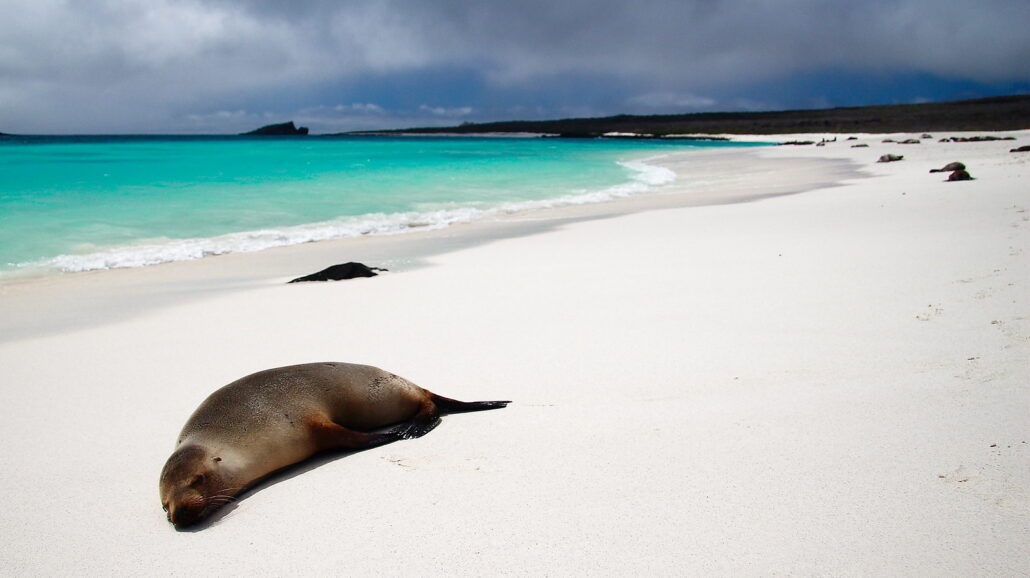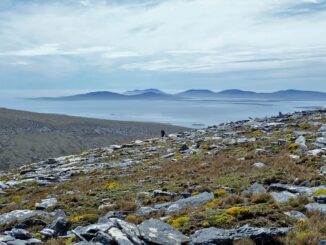
Though famed for its tropical islands teeming with endemic wildlife, the beaches and seas are the main draw for tourists visiting the Galapagos Islands, a new study has revealed.
One of the most renowned UNESCO World Heritage sites, the Galapagos Islands are famous for the historic 1830s expedition that led Charles Darwin to refine his theories on evolution by natural selection. This archipelago and province of Ecuador usually conjures up images of giant tortoises, swimming iguanas, and a wide variety of colorful birds, species found nowhere else on Earth.
But a recent survey of tourists to this paradise in the eastern Pacific Ocean reveals that most visitors would recommend the serenity of the beaches and the variety of ways to enjoy the Galapagos’ marine protected area, one of the more overlooked aspects of Galapagos National Park and Marine Reserve.
Writing in the journal PLOS ONE, a research team from Ecuador and Spain said they surveyed hundreds of domestic and foreign tourists visiting the Galapagos National Park and Marine Reserve to better understand the “push and pull” factors that lured them to the remote South American outpost. The Galapagos are found more than 900 kilometers off the coast of Ecuador.
In tourism studies, “push” factors refer to internal motivations for travel that differ depending on an individual traveler’s personality and personal preferences. “Pull” factors refer to the types of attractions at any given tourist destination that could inspire would-be visitors to choose it for their next trip.
The novelty of traveling to the remote Galapagos Islands was reported as a strongly motivating push factor. The coast and ocean—and not the islands’ stunning biodiversity—were recorded as among the strongest pull factors.
Most respondents told poll takers that they would return to or recommend the Galapagos Islands for the opportunities to relax on the islands’ beaches and play in the ocean, activities that they can enjoy at pretty much any other beach destination in the world.
The tourists surveyed also shared that they enjoyed interacting with the friendly locals. Most visitors polled were foreigners hailing from Europe or North America. Only about a third were domestic travelers.
Tour operators should take note when devising their advertising campaigns, the authors argue.
“The beauty of the beach, the activities that tourists can carry out there, enjoying the clear waters and fresh air, as well as sharing experiences with locals, should characterize the tourist offer in protected marine and coastal destinations” of the Galapagos Islands, wrote Carvache-Franco et al., the authors of the new study.
In other words, managers at Galapagos National Park and Marine Reserve should, by all means, sell up their islands’ historical importance and unique biodiversity, but they would do equally well, or even better, selling the archipelago for its abundance of quiet beach destinations free from the hustle and bustle of modern life.
The authors believe their findings can help park managers and Galapagos tourism companies refine their pitches to lure more visitors and encourage visiting tourists to return. Tourism there is reported to be steadily recovering from the COVID-19 pandemic but only about 267,000 tourists visited the Galapagos Islands last year, compared to the millions who traveled to Hawaii and the Caribbean in 2022.
©2025 Public Parks
Park Info
Park Name:
Galapagos National Park and Marine Reserve
Location:
Galapagos Islands, Ecuador
More information:



